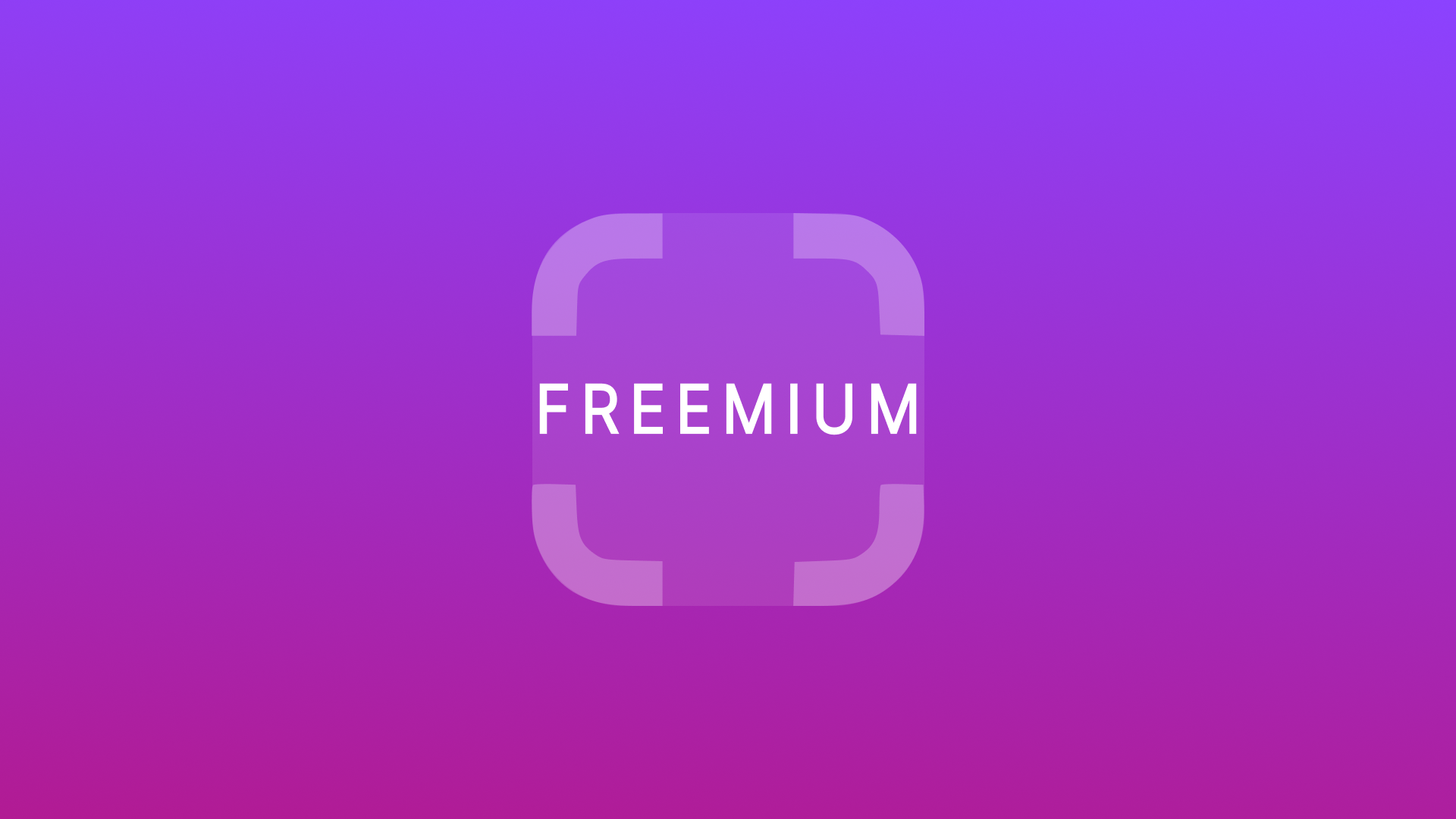Why SaaS companies are moving away from B2B freemium plans

Take a self-guided tour of the platform.
See why Vertice is trusted by top procurement leaders.
Freemium options are everywhere you look. You have access to a vast professional network and a massive library of business-related content with your free LinkedIn account. During the pandemic, you used Zoom and Slack to collaborate with coworkers remotely. You probably also downloaded these apps onto your mobile device at no cost.Many see freemium options as a win-win for both consumers and businesses. As a B2B consumer, you have indefinite free access to a limited version of a product with an option to upgrade to paid versions if you need more tools and features. SaaS companies that implement a freemium model have the potential to quickly grow their user bases and gain brand awareness.However, the freemium model can be a double-edged sword, and more and more B2B SaaS companies are rethinking this approach to customer acquisition. Implementation of freemium plans is becoming less common. UserGuiding reports that less than a fifth of SaaS companies currently offer a freemium option.As a SaaS customer, it is important to understand how freemiums work, why they are losing popularity among many B2B SaaS companies, and what you should consider when exploring prospective SaaS options., ,
What is the SaaS freemium model?
An obvious combination of the words “free” and “premium,” freemium offerings provide you with free access to a product for an indefinite period of time — while at the same time encouraging you to upgrade to advanced, paid versions of the product.Take Adobe Express for example — a free plan that provides users with basic design tools and thousands of templates. Although generous for a free plan, Adobe has positioned its Premium Express plan as the logical next step for users that want to advance in content design for a low monthly cost, offering access to stripped-down versions of Adobe’s professional design and video editing tools like Photoshop and Premiere Pro.The goal of freemium is ultimately to achieve the highest possible customer retention, which requires both brand loyalty and attractive upgrade incentives to boost conversions., ,
Why are freemium models popular?
Based on insights from Medium, here are a few reasons why freemium has been popular over the past decade:1. Freemiums are a great way for businesses to increase their user bases. Offering a low-risk free plan is attractive to users unwilling to commit to a paid plan for a product they are unfamiliar with. This low-pressure plan can be effective in eventually acquiring new paid customers as long as the product proves its value.2. Freemium options can boost sales efficiency. Customers that use freemiums automatically enter the sales pipeline, and since they are able to gain product familiarity while using the free version, it can save a sales team valuable time in trying to convince future paid customers of the value of a product they have never tried.3. Customers who have converted to paid plans tend to be stickier, due to a track record of product satisfaction. This has the potential to increase company NDR, contributing to overall growth in a significant way., ,
But why are they becoming less common in the B2B SaaS world?
Freemium doesn’t really mean free, regardless of which side you’re on.
Everyone loves getting free stuff, right? When it comes to using SaaS, you don’t get something for nothing. Even if the product is free to use, you are often still required to make an account with the provider and give up varying degrees of information. More than 70% of SaaS companies require an email address and company name upon signing up for a freemium plan.Vendors will then use this first-party data as a targeted marketing tactic to encourage you to upgrade to paid plans. Although you may be won over by a product and be ready to commit to a paid version, it’s important to understand that there are strings attached whenever you enter a company’s sales pipeline, even if you initially used that product at no financial cost.From the perspective of a SaaS provider, the freemium model is not a revenue model, but a marketing and customer acquisition strategy. Free users can’t be considered customers until they are paying for the service. By supporting a large base of free users that may or may not convert to paying customers, SaaS providers can waste a significant amount of time and financial resources that are crucial to overall company growth. This is a risk that many less established B2B SaaS companies might be unwilling to take.,
Freemiums can be very difficult for B2B SaaS vendors to monetize successfully.
Overall, freemium pricing models work much better for the B2C market than they do for the B2B market. B2B SaaS products have much smaller TAMs and less opportunity for viral user growth, and they are typically much more complex than B2C offerings. Freemium is a numbers game — one that becomes more difficult to succeed in when you have a narrower market with a more complicated product.,
Freemium generally requires about 10x-100x more users to work as a model than most founders expect…And it takes longer to take off than almost all of us expect.— Jason Lemkin, Founder of SaaStr
, Freemium plans also have very low conversion rates. On average, conversion rates for users upgrading to paid plans hover around 2-5%. To put this into context, out of its 13 million total users, MailChimp has around 800,000 paying customers — a conversion rate just under 1%.Although MailChimp has the scale and funding to sustain such a low conversion rate, for most small-to-medium SaaS companies looking to differentiate themselves in highly competitive markets, the benefits of implementing a freemium model simply wouldn’t outweigh the costs. Playing the long game only works when you can mitigate the risks., ,
We’ve seen the most effective freemium plans come when a company has been around for a few years and figured out their unit economics before opening up the top of the funnel with free.— Patrick Campbell, CEO of ProfitWell
,
What to consider when exploring new SaaS options for your business
Interestingly, 86% of B2B SaaS businesses prefer to offer free trials over freemium plans. A free trial, whether it’s for 30, 14, or 7 days, enforces a sense of urgency that works to the advantage of the vendor.But what works to your advantage as a B2B customer? When you’re trying a new SaaS product and aren’t ready to commit to a paid plan, should you bother with a freemium or opt for a free trial option? Short answer — it depends on three factors:
1. The size of your company
If you have a small business or only require a few users, a freemium plan might suffice. You’ll have free access to the service for as long as you like, and the paid upgrades will be there when you need them as your business grows. On the other hand, for medium and large businesses that require a high amount of licenses, a free trial of an upgraded version of the product would make more sense to try out.
2. The type of service you’re looking for
Freemiums provide the most limited and least complicated versions of SaaS products. If you’re looking for complex services with few limitations, you’re unlikely to find this as a free user. In this case, it would be better to use a free trial that would give you the chance to test out more complicated product features. If the SaaS provider doesn’t offer a free trial, it’s worth reaching out to their sales team to see if they can offer you a demo.
3. The amount of time and support you need from the get-go
Freemiums are good options if you aren’t under tight time constraints and have the ability to “window shop” for SaaS. They also can be a good way to try out a product you might already be familiar with. However, if you are unfamiliar with the service and need extensive product support in the beginning, it’s better to utilize a free trial option where vendor representatives can walk you through the product and help you understand how to use it successfully. However, since free trials have time limitations, you would need to make sure the trial gives you enough time to familiarize yourself with the product to determine whether it is a good fit for your SaaS stack., , , , , , , , , , , , , , , , , , , , , , , , , , , , , , , , , , ,
.webp)


![The Best SaaS Management Platforms for 2026 [According to Analyst Research]](https://cdn.prod.website-files.com/6640cd28f51f13175e577c05/687f56f6e55f8c0078341eb6_2025-06-Lionfish-Tech-Advisors-Report-01-1080x1080.webp)


.webp)